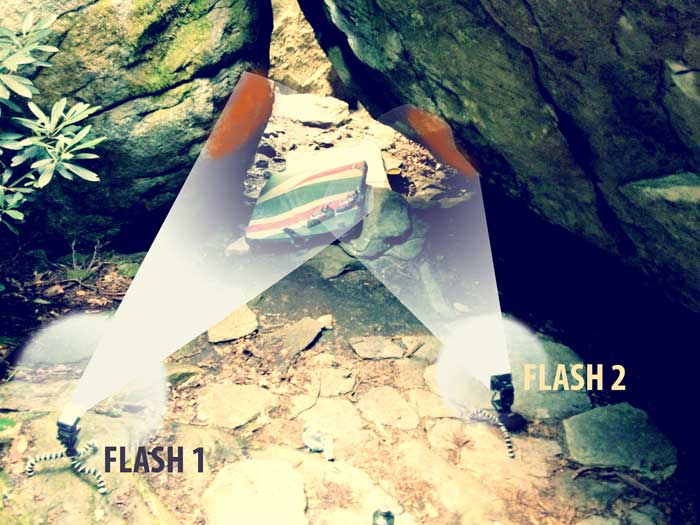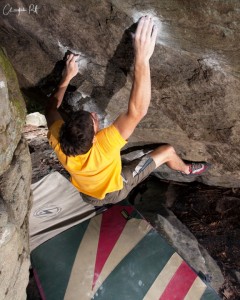Climbing Photography Lighting – Slave Flashes
Climbing Photography Lighting with Two Slave Flashes and Diffusers
Despite the throw of limbs Brennen Bull is flinging, focus on something a little different. The Last of the Mohicans is a v11 boulder problem out at Grandmother Boulders, its nested where the Mighty Mouse boulder meets with its neighboulder and hides from the light from sun up to sun down. A little jimmy rustling is required to get anything nearing appropriate in color and exposure, and in this instance I used a couple of slave flashes to brighten up the scene.
Before I get too deep into this, I will say that slave flashes, or flash lighting in general, are not necessary to expose this climb. Sunlight does indeed bounce around the Mighty Mouse boulder (under French Crack is relevant here) quite well between 11am and 3pm depending on the season. You could use a reflector or a brightly colored crash pad (shout out to Organic Climbing for that) to send a more diffused, albeit a more subdued, light. I didnt want to carry my reflectors around and I didn’t want to procure a reflector holder person to hold the thing(s) while I photographed. So I used my flashes.
The Set Up
Knowing a bit about climbing, photography, and climbing photography lighting helps here, but most of that comes with trial and error and error and error and remembering errors. For this shot I used two flashes with each their own radio slave poppers to trigger the light. They’re sitting on gorilla pods. If you use flashes outdoors, I wholeheartedly suggest gorilla pods, they’re awesome.

Slave Flash Notes:
- Place your flashes on level ground or level the gorilla pods.
- Make sure people know where the flashes are.
- Set your flashes to High Speed if you’re shooting in high speed mode with your camera.
- Take test shots, get your settings right BEFORE the climber starts try harding.
- Be careful of hotrocks, the places shown in red where light might hit and overexpose if its in the frame.
- If your climber has taken a rest, wake up your flashes before they start again.
- Try to make shadows for the holds, flat & even lighting on climbing holds hides their shape, and that’s boring.
- MOVE YOUR FLASHES! There’s no rule that says once they’re down, they stay down. Try different angles, play.
- Make sure YOU know where your flashes are, don’t unintentionally capture a flash bulb in the frame.
Flash photography can be tricky. Some techniques I’ve learned to work with have helped me get better photos up front, less time developing means more time for beer, friends, climbing, and eating food.
- Setting my ISO around 200 – 320, even around 800 sometimes helps to really make the light from the flahes pop while not over exposing the shot, but obviously that will depend on your settings.
- Keep the f-stop, the aperture, a little constricted. Shooting between 5.6 and 9.0 will help keep everything in focus and help to even the flash lighting out.
- Remember that using flashes can create some pretty harsh shadows. Your climber will be shadowdancing if you use too much light. Its not always a bad thing though… just keep it in mind.
- Use diffusers on your flashes. For this shot I used a standard plastic cup style diffuser on Flash 1 and I used a soft box style flash diffuser for Flash 2. Eash has its benefit, its drawback, but I tend to like the soft box style better.
- Find the balance between high shutter speed for stopping motion and a low shutter speed to get even lighting from the flashes. Take those test shots.
Each climb has its own climbing photography lighting challenges, that’s certainly something I’ve found out. Whether you use an on camera flash, slave flashes, reflectors or just natural sunlight there’s always a set of angles to explore. Don’t miss out.
Oh… and take a photo of a fly every now and again. Especially if it has chalk on its eyes. -Pratt



